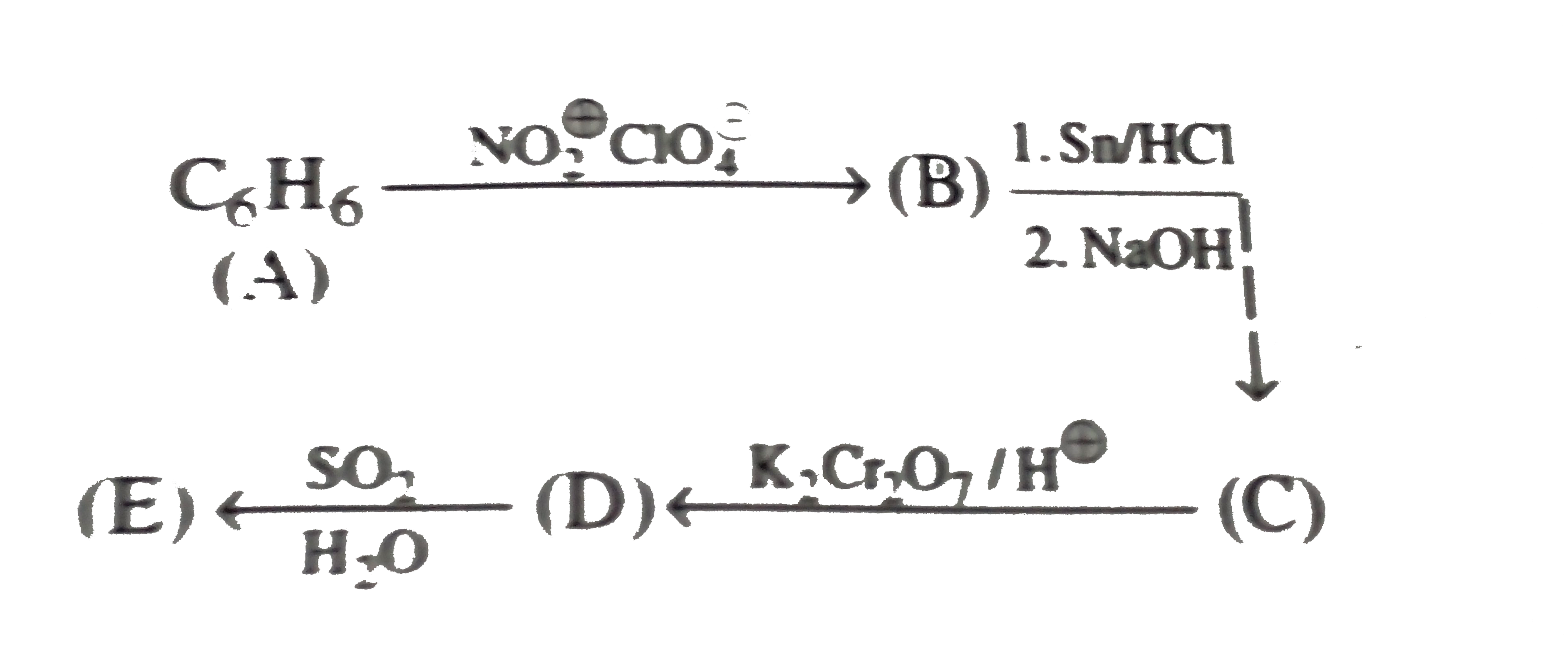In Mond's process following chemcial changes occurs:
Coordination number of in is…...
The correct Answer is:4
To solve the problem regarding the coordination number of nickel (Ni) in the intermediate product (P) of Mond's process, we need to analyze the chemical changes that occur during this process.
1. Understanding Mond's Process:
- Mond's process is a method for extracting nickel from its ores. It involves the formation of nickel carbonyl (Ni(CO)4) as an intermediate product.
- The reaction can be summarized as:
- Impure nickel (Ni) reacts with carbon monoxide (CO) at a temperature of 330-350 K to form nickel carbonyl (Ni(CO)4).
- This nickel carbonyl is then heated at 450-470 K to decompose back into pure nickel and carbon monoxide.
2. Identifying the Intermediate Product:
- The intermediate product (P) in the reactions is nickel carbonyl, which has the formula Ni(CO)4.
3. Determining the Coordination Number:
- The coordination number of a metal in a complex is defined as the number of ligand atoms that are bonded to the central metal atom.
- In nickel carbonyl (Ni(CO)4), the nickel atom is coordinated to four carbon monoxide (CO) ligands.
4. Conclusion:
- Since there are four CO ligands bonded to the nickel atom in Ni(CO)4, the coordination number of nickel in the intermediate product (P) is 4.
Final Answer:
The coordination number of Ni in (P) (Ni(CO)4) is 4.
- Mond's process is a method for extracting nickel from its ores. It involves the formation of nickel carbonyl (Ni(CO)4) as an intermediate product.
- The reaction can be summarized as:
- Impure nickel (Ni) reacts with carbon monoxide (CO) at a temperature of 330-350 K to form nickel carbonyl (Ni(CO)4).
- This nickel carbonyl is then heated at 450-470 K to decompose back into pure nickel and carbon monoxide.
- The intermediate product (P) in the reactions is nickel carbonyl, which has the formula Ni(CO)4.
- The coordination number of a metal in a complex is defined as the number of ligand atoms that are bonded to the central metal atom.
- In nickel carbonyl (Ni(CO)4), the nickel atom is coordinated to four carbon monoxide (CO) ligands.
- Since there are four CO ligands bonded to the nickel atom in Ni(CO)4, the coordination number of nickel in the intermediate product (P) is 4.
The coordination number of Ni in (P) (Ni(CO)4) is 4.
Topper's Solved these Questions
Similar Questions
Knowledge Check
(xiv) Following equation represents a method of purification of nickel by
NiImpure+4CO320K−−→Ni(CO)4420K−−→NOPure+4CO.Avan Arkel processBpyrometallurgyCMond processDzone refiningWhich compound is prepared by the following reaction ?
Xe+F2(2:1 volume ratio)Ni−−→673KAXeF4BXeF2CXeF6DNone of these.The end product in the following sequence is :
Acetamide P2O5−−→(A)H2,Ni−−−→(B)ACH3NH2BC2H5NH2CCH3CNDCH3COONH4
Complete the following reactions:
Propane nitrile(N)(i)PhMgBr−−−−−−−−−→(ii)H3O⊕(O)Zn−Hg−−−−−−−→HCl(P)
View SolutionWrite the final product of the following reaction :
CH3−CH∣OH−CH3Cu/573K−−−−−→
View SolutionIdentify the final major product for the following reaction ?
Anline NaNO2+HCl−−−−−−−−→O−5∘CPβ−napthol−−−−−−→Q
View SolutionCH3COOHBr2/P−−−→(Y)(i)KCN−−−−−−→(ii)H3O+(X)
Here, (X) is :
View SolutionConsider the following sequence of reactions
ACrO3−−→B(C4H8O3)Warm−−−→CH3O∣∣CCH3+CO2
The compound (A) is :
View Solution

